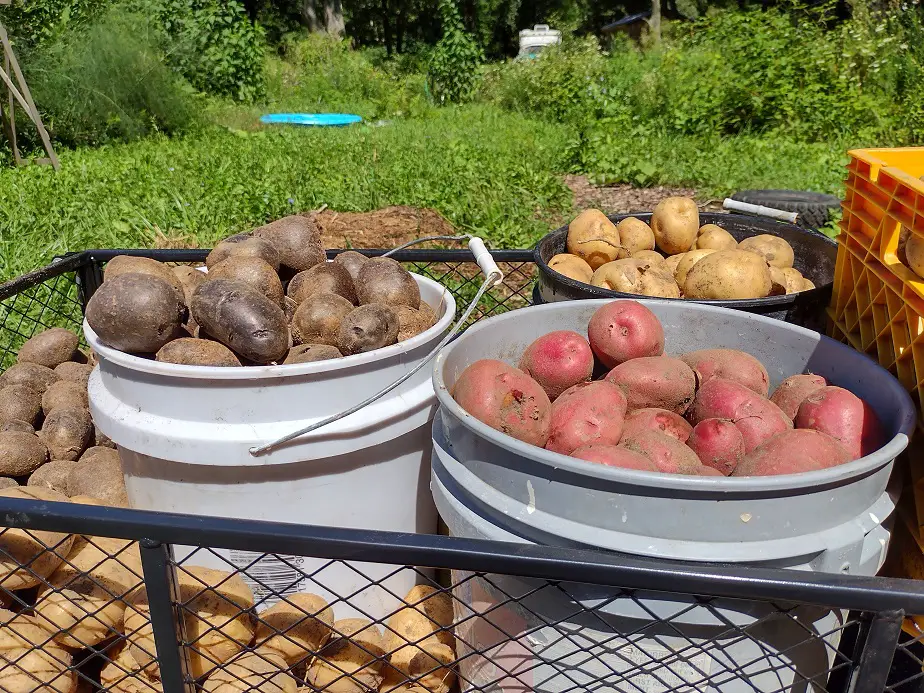Around fifteen years ago, I decided to plant a garden. I was hungry, making a poor wage, and not able to afford much produce. What I did have was space and a little spare time. I cut and cleared sod, chipped away at the hard, poor soil, and made and made an 8-foot square garden. I planted it wall-to-wall and gave it water and some fertilizer. Almost nothing grew. Here’s how to avoid that situation.
Understanding Plant Cultivation
Plants acquire energy from the sun and use that energy to collect minerals from both the air and soil and arrange them to form plant cell material and plant sap. The only pure energy plants have comes from the sun. It’s literally a small, extremely complex machine with a solar-charged battery bank.
The first important thing for a garden is decent sunlight. Generally, 12 hours of direct sun in the summer is considered to be ‘full sun’, although most open areas will have more than that. You need a bare minimum of around 8 hours of full sun to grow a fair crop of most fruits or produce, with few exceptions.
A heathy, productive plant is a result of naturally fertile soil with good water and sun. Unfortunately, very few places in the world come with all three. As the gardener, you will have to supplement something. You will be a tender of the earth, a caretaker of what god has given you to manage. And the earth often needs some loving care to function well.
Some plants benefit from pruning. Some plants benefit from being grown somewhat off the ground. Growing plants up like that keeps them off the soil, increasing airflow and reducing both fungus and some pests.
Most of the time, plant disease and serious bug problems are a sign of unhealthy plants, which is almost always a sign of unhealthy soil. Most gardeners inadvertently harm their soil while trying to improve it.
You will most likely need to bring both water and fertility to the soil. As fertility increases, the need for extra water decreases. The Crux of gardening is building the soil.
Additional Info:
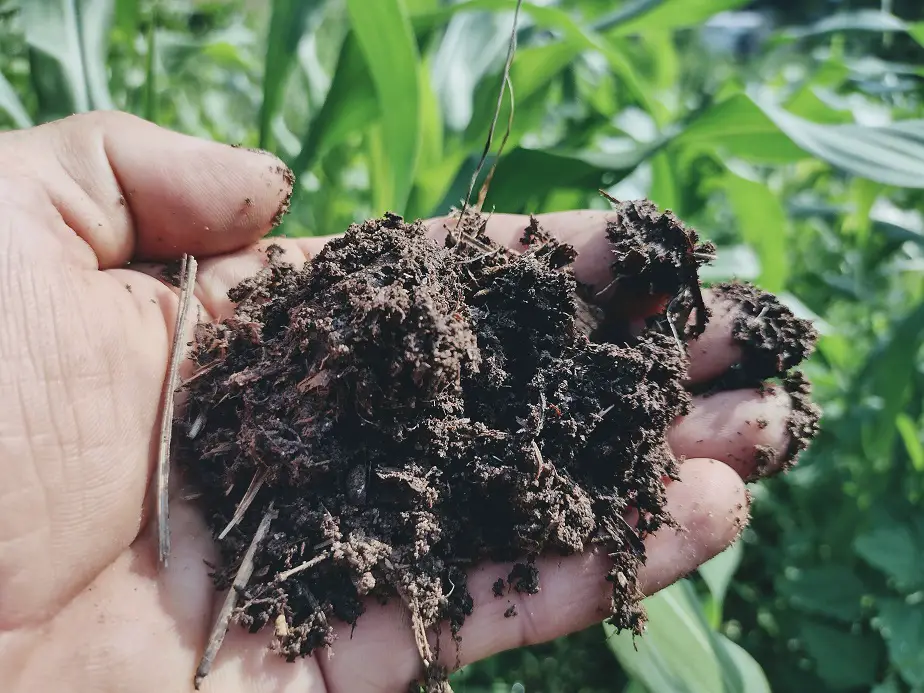
Principles of Good Soil
Good soil is dark, rich in a variety of minerals, and full of life. As a consultant, I can stell good soil from bad soil in 30 seconds. I turn over a shovel of dirt and look for worms. No worms equals bad soil. Few worms means it’s not horrible, but it needs work. Good soil will have at least 10 visible earthworms in a single shovel of soil.
good soil is fluffy and spongy, It absorbs a lot of water and it holds onto water well. It doesn’t dry out quickly, and it doesn’t easily compact. It’s dark-colored, and full of natural fertility. This is all a result of a healthy soil microbiome, which is the combination of bugs, worms, and microbes in the ground.
A wise gardener will cultivate this microbiome as the primary technique of cultivating plants. The four principles of cultivating healthy soil are:
- Don’t till up your topsoil
- Add organic matter constantly
- Keep the soil covered with some form of plant material, living or dead
- Strictly limit all chemicals and synthetic fertilizers
Those four things took me 10 years of failure and meager success to understand. With these simple concepts, you can avoid most common troubles attain higher yields, and grow more nutritious foods in your garden.
Additional Info:
- Potting Soil vs Garden Soil (different and DIY recipes)
- Compost Tea vs Compost (which is better)
- How Much Compost for a Raised Bed Garden?
- 7 Tips for Using Biochar in Your Soil
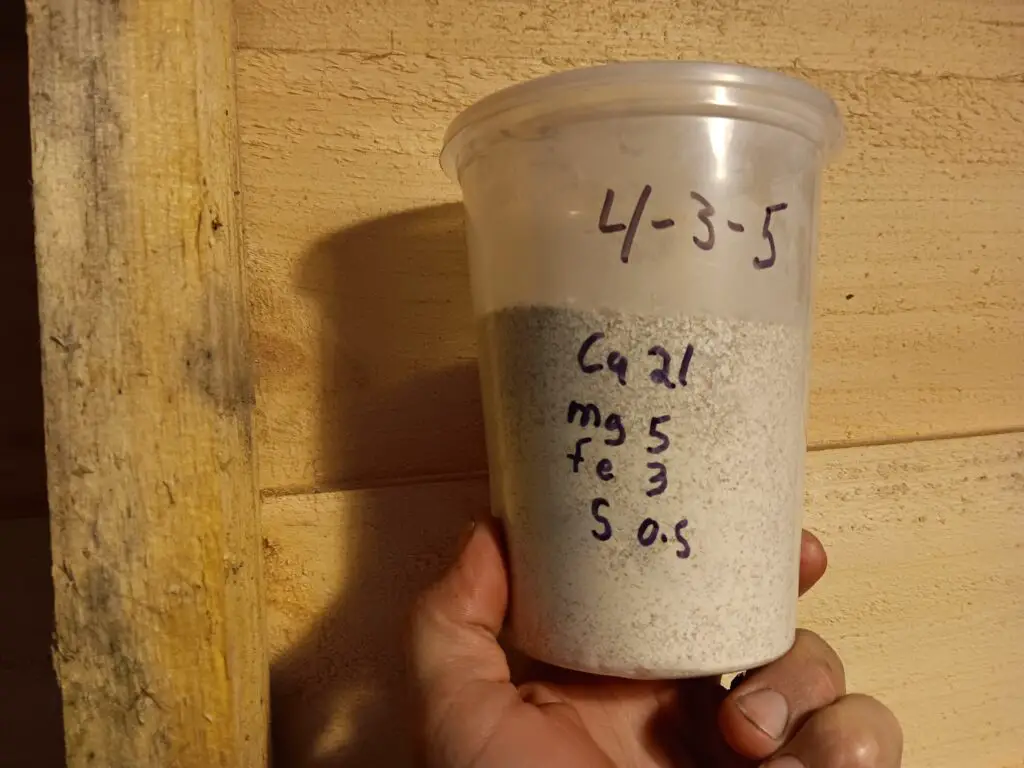
Basics of Fertilizer
Most garden fertilizers are synthetic salts. They often have very few plant nutrients but are strongly concentrated. Common garden fertilizers like Miracle-Gro and 10-10-10 are strong enough to have a detrimental effect on soil biology and soil condition. Strong fertilizers tend to reduce the organic matter in and on the soil, and kill off beneficial bugs and microbes. This causes soil to deteriorate.
I have killed good soil in one season just by following the instructions on a bag of garden fertilizer. I had finally gotten my side garden (about 2,000 square feet) decently fertile and full of worms. I planted potatoes and did a DIY soil fertility test. The test showed that I was low in most major minerals so I got a bag of fertilizer from the garden center and followed the directions.
It told me to apply it every two weeks throughout the season between my rows of plants. By the end of the season when we dug up our potatoes, there were no worms to be found and the soil had become visibly poorer. That’s when I started questioning things. I learned that standard garden fertilizer kills worms because it’s a potent salt. It also kills all the beneficial microbiology that actually creates natural fertility.
Using regular fertilizers is a lot like taking a pill to fix a symptom while ignoring the larger underlying, more serious health problem. Now, my best garden plot doesn’t get any synthetic fertilizer. Just compost and natural fertility-enhancing ingredients.
Most of my soil fertility comes from manure. We have chickens, rabbits,and small-breed pigs. The manure they produce is not ridiculous, but it is enough to fertilize most of my 1/2-acre garden. I’ve purchased a trailer full of composted dairy manure from a farm nearby. That made a huge difference to our soil. Composted manure is amazing stuff.
Additional Info:
- Best Fertilizers for Home Gardening (chosen by professional growers)
- 15 Tips for Fertilizing Seedlings (and what to use)
- How to Use Manure in Your Garden
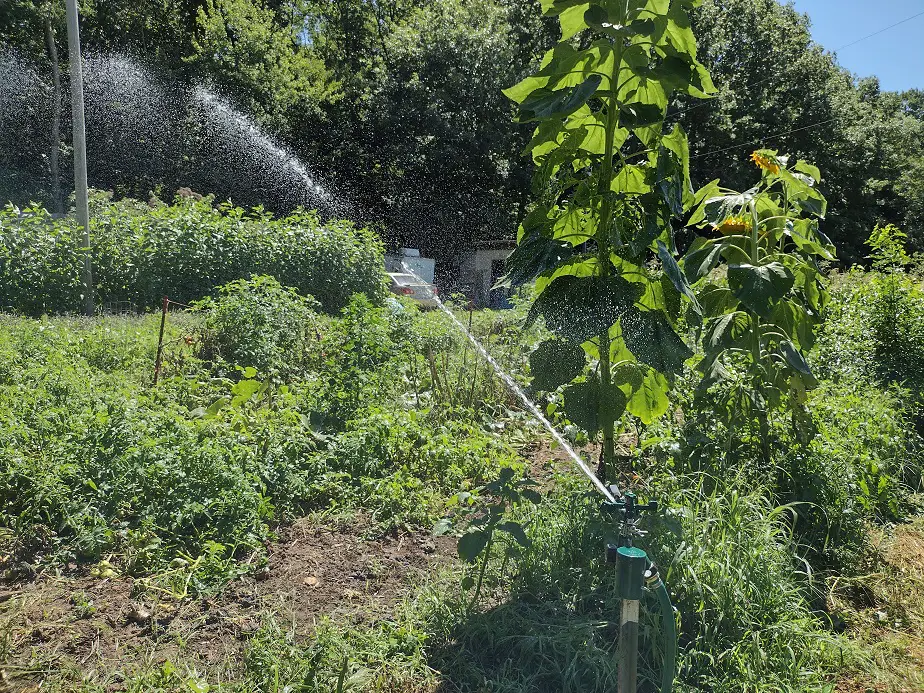
Planting and Watering
Most seeds will do fine if planted at 1 inch (the first knuckle) deep. covered, and kept moist. Every type of seed has a wide range of acceptable depths for planting and the instructions on the package are just generic. Heat-loving plants, like tomatoes and peppers, need warmer conditions tio germinate. Cold-tolerant plants like most greens can germinate in cool weather.
Every seed will germinate at 65 degrees F. That’s ideal for some and low for others. Heat-loving plants, that would be most vegetables, germinate better and faster at 70 or 75 degrees. Spinach is the big exception. It will not germinate past 70 degrees and does best at 50 or slightly lower. It also takes a long time to germinate.
If it’s your first time, I recommend either sticking with things that can be directly sown (seeded right in the ground instead of started early indoors), or just buying some seedlings tha you can transplant into your garden.
Here are a few options for easy direct-sown crops:
- Beans
- Cucumbers
- Corn
- Potato
- Radish
Plants all need water. That’s how mineral nutrients flow from the sol to a plant’s roots, and into the plant. Seeds and seedlings are very dry-sensitive. One good drying out can kill them off. After your plants have strong, deep roots, they can withstand moderate dryness and even some drought if the soil is good.
Check the moisture level with your eyes and hands. If it’s dry at the level of your seeds or the plant roots, that’s a problem. Good soil should be moist, not dry, wet, or soggy. For more mature plants, it’s okay if the top inch or two of soil dries out. When the soil dries deeper than that, you better water it thoroughly. Adding 1 inch of water is a thorough watering.
Check your rate of watering by placing a bucket in the garden and see how much water it collects as you evenly water your plants. Whatever it takes to put one inch of water there, keep doing that through the rest of your garden.
Related content: Do Potatoes Need a Lot of Water? (and tips for watering)
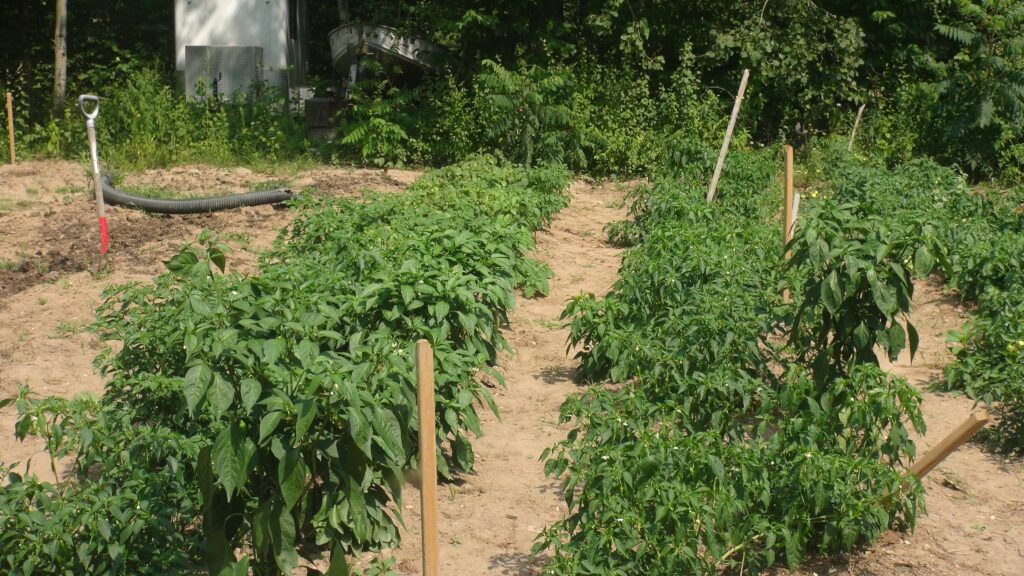
Common Gardening Mistakes
The most common gardening mistakes are improper watering, improper fertilizing, and neglecting weed growth are most common gardening mistakes. If you can handle these three things, you can grow a better-than-average garden. Other common mistakes are compacting the soil directly around your plants, and neglecting good soil improvement practices.
If you water too much, plant roots will slow their function and the plant begins to starve. You can fix it by letting the soil dry out a bit, then don’t do it again. Your garden should never become muck and swampy, that means too much water. Too little water causes plants to wilt. slight wilting is normal in the heat of the day, but nothing extreme. If the soil is dry 2-inches deep, water it.
Fertilizer, too much kills, and not enough stunts. Most gardens I’ve seen have had a lack of fertility. Here in West Michigan, the base soil is very sandy. I grew up in the Michigan savanna lands. The soil here is very sandy. Rainwater moves through it so fast that it washes out many plant minerals. There’s little to no organic matter in the native soil other than in old, established forests.
In other areas, heavy clay or compost-rich soil can actually absorb too much fertilizer if you let it. That causes mineral toxicity for plants and nothing grows good for a long while.
Most home gardeners either put way to much fertility concentrates (fertilizer) down or way too little. Either way, it’s going to result in poor plant health and poor yields. If you’re complete;y are to these ideas, I strongly suggest you
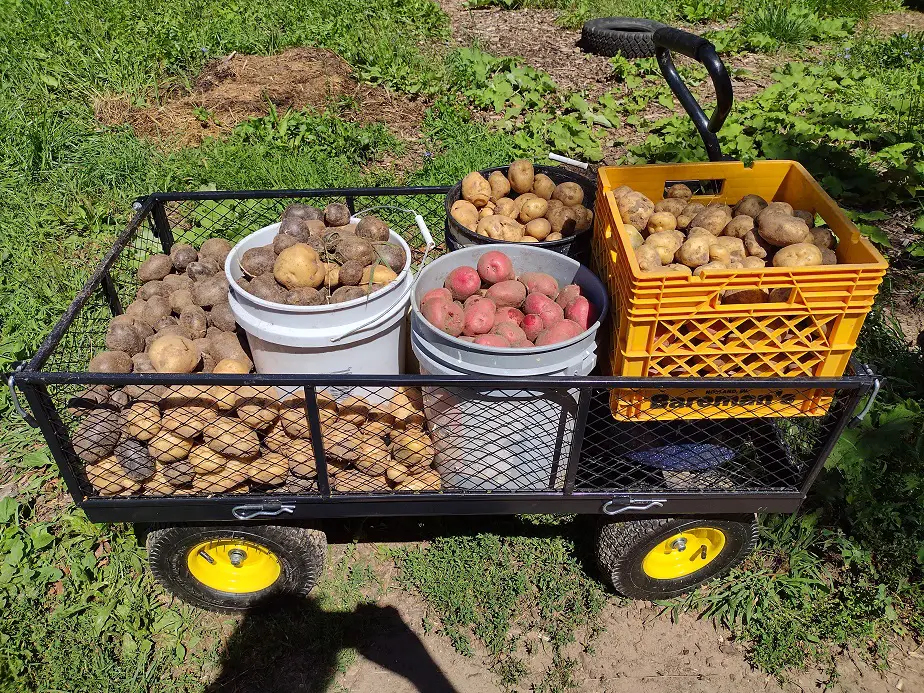
What’s Worth Growing?
Some plants produced many pounds of food, some only a few ounces at most. But, it’s the total nutrition that I like to consider first. For example, corn may produce up to 1 pound of grain per stalk. A tomato plant may produce 15 pounds of tomatoes. But, the corn produced more sustenance. Technically, each produced about the same calories, but only one produced nearly a days worth of food.
When I am teaching sustenance gardening, I ask folks to just pick one calorie crop. Potato, corn, peanut, and sweet potato are great examples. Try to learn to grow just one. Next, pick something you really like. Tomatoes are a classic. Finally, grow some high-yielding green like kale or chard. With all those in your garden, you will be learning to grow a delicious, calorie-rich, nutritious meal.
Most egetables alone will not sustain a human diet. That’s why I suggest a grain or at least some type of potato. They make a filling meal. But, green vegetables are full of vitamins and minerals and that’s an equally important part of sustenance.
Related Articles:

